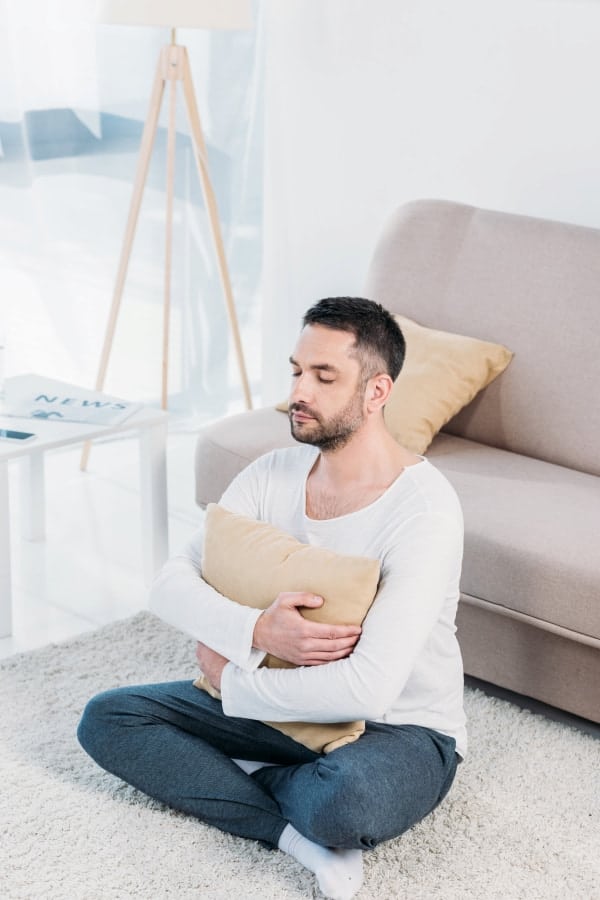The mere mention of the term “hypnosis” never fails to raise one or two eyebrows. Some people simply aren’t comfortable with the idea of any deep relaxation technique or exercise that enables you to enter a new level of consciousness and take control of your subconscious. Likewise, there will always be those who refuse to believe in the science of hypnosis, having convinced themselves it is not an effective way to treat patients and has no real benefits.
At the opposite end of the scale, you have the countless millions who have brought about significant improvements to their lives through hypnosis. Having mastered the art of entering into a hypnotic state and getting to know their subconscious mind on a deeper level, advocates of hypnosis know just how powerful it can be (see also hypnosis for kids).
Generations of evidence have shown how hypnosis can help with an extensive range of physical and mental health issues. Hypnosis may help you relax if you suffer from bedwetting, a lack of sleep (see hypnosis for insomnia post), chronic stress, hypnosis has played a role in helping millions of people quit drinking and can also be just as effective in relieving pain as conventional pain killers. As explained in our earlier post on childbirth hypnosis, hypnosis intervention minimizes the need for pain medication. The potential benefits of the hypnotherapy (see ‘Hypnosis for the Immune System‘ and ‘Healing Hypnosis‘) are not a subject of debate for those who’ve experienced them, but to what extent could self-hypnosis have the same positive effects?
Is it genuinely possible to induce a hypnotic state of mind without the involvement of a hypnotherapist, tapping into the benefits of hypnosis without the associated costs?

The Growing Popularity of Self Hypnosis
In a recent interview with Bustle, noted hypnotherapist Grace Smith, proclaimed outright that self-hypnosis is indeed a thing.
“It’s possible to hypnotize yourself by training your mind to relax without the use of any recordings and without the assistance of a hypnotherapist,” she said.
“This is beneficial because it means you can improve your ‘relaxed state’ (your state = mindset + feelings + behaviours) anytime, anyplace, for free. Of course, weeding out a lifelong issue or completely transforming a deep-seated negative belief will benefit from the deeper work of hypnotherapy digital programs and private hypnotherapy sessions, but when you want to change your state both in the short-term and, after enough conditioning, in the long-term… self-hypnosis is quite possibly the most effective, non-invasive, and cost-effective way to go!”
Theoretically, there’s nothing about a professional hypnotherapy session that cannot be recreated at home. Hypnosis involves the use of suggestions and relaxation techniques to gradually ease the body and mind into a meditation-like state, where it becomes possible to take more direct control over the subconscious mind. Hypnosis makes you aware of your actions and goes into your unconsciousness where you can face whatever triggers stress, anxiety, or uncontrollable behavior like eating at night. This is also how self-hypnosis to relieve stress and anxiety works.
While the guidance and coaching of a professional hypnotherapist can be great for helping people fall into a hypnotic state, it’s nothing that cannot be recreated with an audio recording – even a YouTube video. If self-hypnosis really does work, it provides those who master the practice with the power to take personal control of their therapy from home.
How Hypnotherapy Works: The Basics
It is perfectly normal to underestimate the power of the subconscious, given how it does its thing silently in the background. Nevertheless, this is the part of the brain we depend upon for our very survival. It’s what controls essential bodily functions like breathing while we’re asleep – a pretty essential contributor to our health and wellbeing. For example, hypnosis for hyperacusis (see post), or high blood pressure use deep breathing techniques and focus on your subconscious mind to gradually expose yourself to extremely loud noises.
It’s also the part of the brain that’s responsible for things like speaking in public, anxiety, fear, stress, depression, nervous smile, and so on. Issues we feel we have no direct control over (see hypnosis for trichotillomania here or hypnosis for tech frustration) as it’s not easy to simply tap into your subconscious mind at the snap of a finger and alter the way it works.
This is essentially what hypnosis is all about. Hypnosis is the process of entering into a hypnotic state, at which point you have the opportunity to reprogram or completely rewrite your subconscious. For some mental health problems like bipolar mood swings, hypnotherapy can be of great help. So can self-hypnosis for anxiety, for example.
In doing so, you’re able to take control of many things that may be affecting your life – addictive habits like smoking, irrational fears and phobias, physical pain relief – get the hang of back pain hypnosis – speech impediments (see here), and the ability to manage your weight more effectively. We can even learn to let go of someone by taking back control of our emotions – see ‘Self Hypnosis to Get Over Someone’ post.
You make the adjustments while in a trance-like state, you ‘wake’ yourself up at the end of the session and you return to a better state of being. Hypnotherapy sessions access subconscious thoughts and mental images related to one’s neglected psychological problems. The participants gradually discover what haunts them, and, most importantly, sessions offer complete anonymity, which is important when dealing with deeply personal matters, like in masturbation hypnosis (see post), for example. Hypnosis deals with negative or obsessive thinking by promoting relaxation and positive visualization which we already mentioned when talking about infertility hypnotherapy.

Using Self-Hypnosis for Better Mental Health
As previously touched upon posts about hypnosis, including ‘Hypnosis for Skin Picking’ post here, and Psoriasis hypnotherapy, there is nothing about the treatment provided by a trained clinical hypnotist that cannot be recreated at home. Every tool and basic training guide you need is available online – some of which come from certified professionals. Nonetheless, it is necessary to determine whether the symptoms relate to some medical condition before hypnosis becomes a workable therapeutic option (see tinnitus hypnosis).
However, the ability to bring about positive change through DIY hypnotism at home lies primarily in open-mindedness as explained in other posts (see what to do if you overshare). Like with dealing with passive-aggressiveness, you’ll need openness to confrontation as you will offend some people because assertiveness is direct. In order to make self-hypnosis work for you, you must:
• Genuinely want your self-hypnosis project to work
• Have some kind of defined goal or outcome in mind
• Not be sceptical, cynical or pessimistic about hypnosis
• Avoid the temptation to overanalyze the whole self-hypnosis thing
• Be open to the idea of self-hypnosis without fear
You also need to set yourself up with the right surroundings, in order to bring on the deep relaxation necessary to make hypnosis work. It should be a place that you can relax (and even fall asleep) with minimal distractions and absolutely no chance of being interrupted during the process.
Contrary to popular belief, the process of bringing on a hypnotic state at home can actually be surprisingly simple. There are countless tutorials and step by step guides to the art of self-hypnosis, but one of the simplest you’ll find is the 10-step guide recently shared by Grace Smith:
- 1. Notice your starting stress level from 0 – 10 (10 is the most stressed you can be).
- 2.Close your eyes.
- 3. Take five deep, slow breaths.
- 4.Imagine a color you love, say the color to yourself, and now imagine it flowing through your body from head to toe.
- 5.Very slowly repeat to yourself, “three, I am going deeper and deeper,” “two, I am going deeper and deeper,” “one, I am going deeper and deeper.” On a separate note, If you want to stop using ‘um’ or ‘like’ when talking, slow down and really listen to the question asked before formulating a response.
- 6.Very slowly repeat to yourself three times the following hypnoaffirmations: “I am safe, I am calm, I choose to relax.”
- 7.Imagine the same color you love, say the color to yourself, and now imagine it flowing through your body from head to toe.
- 8.Imagine you are experiencing the state you desire. For example, if you were feeling scared, imagine yourself feeling confident. If you were procrastinating, imagine yourself taking action (see also procrastination hypnosis). And if you are seeking for approval, imagine yourself accepting criticism. Now, for the next 60 seconds, imagine yourself thinking, feeling, and behaving the way you desire to think, feel, and behave.
- 9.One last time, imagine that color you love, say the color to yourself, and now imagine it flowing through your body from head to toe.
- 10.Notice your new stress level from 0-10 (0 is the most relaxed you can be).
Source: Grace Smith via Bustle – Author of ‘Close Your Eyes, Get Free: Use Self-Hypnosis to Reduce Stress, Quit Bad Habits, and Achieve Greater Relaxation and Focus
It is important to repeat the self-hypnosis exercise above on a regular basis and as necessary as often until it becomes second nature. If this particular approach to self-hypnosis proves ineffective, experiment with other instructional articles and tutorials until you find something that works.
Alternatively, an individual struggling to reach a hypnotic state independently could benefit from booking at least a session or two with an experienced professional (see more on expectations from your first hypnosis session). Unsuccessful DIY hypnotherapy does not necessarily mean it is impossible to hypnotize the individual in question. Nor does it mean their self-administered treatment will not work – it may simply need the input of an expert to steer things in the right direction.
Bottom Line: Does Self-Hypnosis Really Work?
The answer to this question is exactly the same as with any other form of clinical treatment or course of prescription drugs:
It depends entirely on who you are, what you are attempting to treat and how the treatment is administered.
Self-hypnosis works for different people in different ways. What transforms the health and wellbeing of one person could prove entirely ineffective for someone else.
Nevertheless, both the science and the overwhelming anecdotal evidence that has amassed over the years suggest that life balance therapy can be a powerful and versatile tool for a better quality of life (hypnosis also works amazingly in guiding you to lead a more stoic life).
It’s just that with self-hypnosis, you get to take complete control over your course of hypnotherapy at home – without paying a penny for a single hypnosis session.
But what’s even more important with self-administered hypnotherapy is the extent to which the individual in question genuinely believes they can reach the required mental state to achieve results – see how to remove mental blocks with the help of hypnosis for creative writing. Where it is possible for a person to be hypnotized by a professional therapist, it is technically possible for them to hypnotize themselves at home. Also, self-hypnosis for ADHD can be helpful for dealing with anxiety and promoting relaxation, but the core symptoms of inattention and hyperactivity could be more difficult to address.
Nevertheless, this only applies when the individual in question has a positive and optimistic attitude to the concept of DIY hypnotherapy, otherwise, it simply isn’t going to work.

